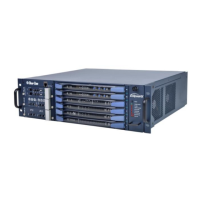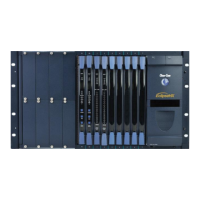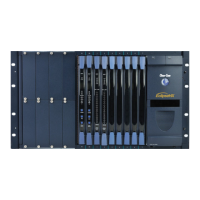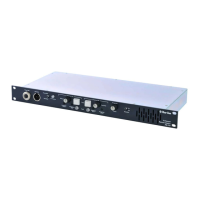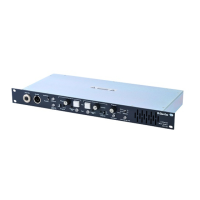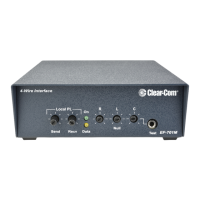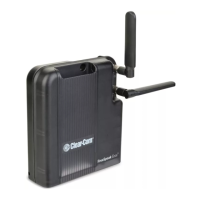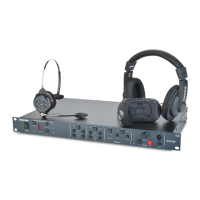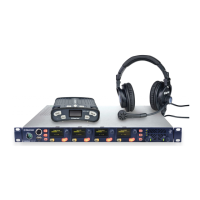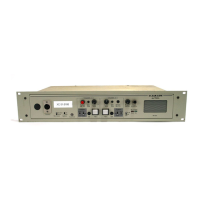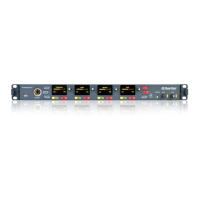Note: Power-One power supply units (part 720379Z) should not be adjusted.
5.7.1 Conditions that cause an alarm
The following conditions trigger an alarm:
If any of the voltages produced by the first power supply unit fall below
normal levels.
If any of the voltages produced by the second power supply unit fall
below normal levels.
If an internal matrix alarm condition activates a matrix relay to turn on
an external alarm.
If the active CPU card exceeds a temperature threshold.
If either of the CPU cards is removed from the matrix.
If either of the matrix’s two cooling fans stop operating.
If the temperature inside the Eclipse matrix exceeds a set threshold.
5.7.2 Main alarm light
An alarm condition triggers the following events:
The red main alarm light flashes.
The matrix’s internal alarm buzzer sounds.
Any installed alarm relay outputs switch to active (the normally open contact
closes and the normally closed contact opens). When the alarm relay activates,
it can cause an externally connected device like a light or buzzer to switch on.
One of the six auxiliary red alarm lights may go on, to more precisely indicate
the source of the alarm condition (see 5.7.4 Auxiliary alarm lights).
5.7.3 Alarm reset button
When the alarm reset button is pressed the following events take place, even if
the alarm condition has not been corrected:
The internal audible alarm buzzer stops buzzing.
Any wired relay contacts return to their inactive state. If these relays are
connected to external alarm lights or alarm buzzers, those lights or
buzzers shut off.
If the original alarm condition still exists, the red main alarm light on the
matrix’s front panel continues to flash. The red main alarm light only
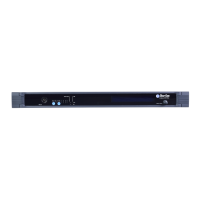
